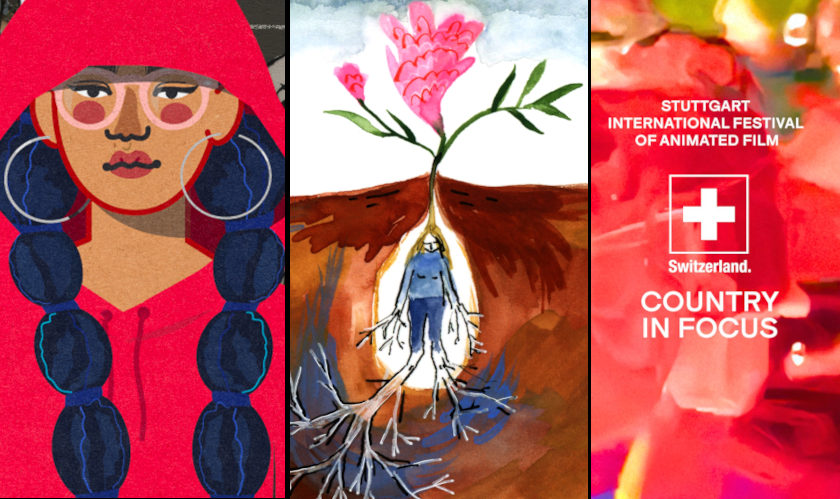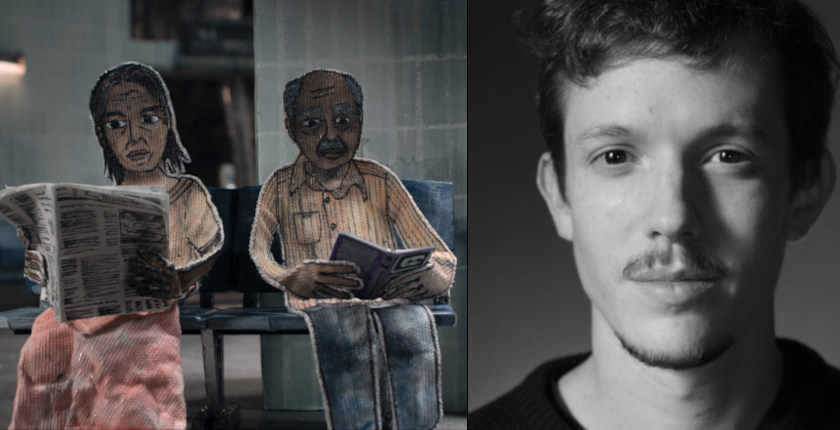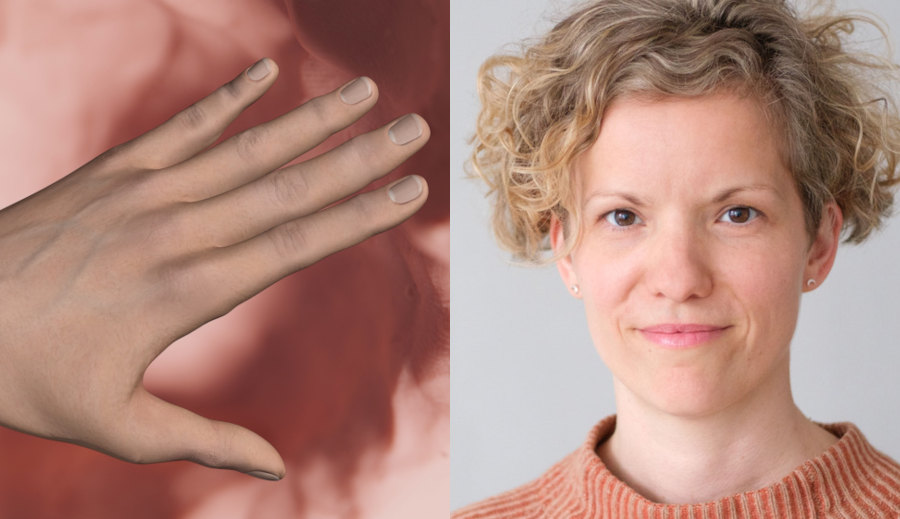Animation As Metaphorical Storytelling: Interview with Nils Hedinger (Swiss Animation Portraits 2022)
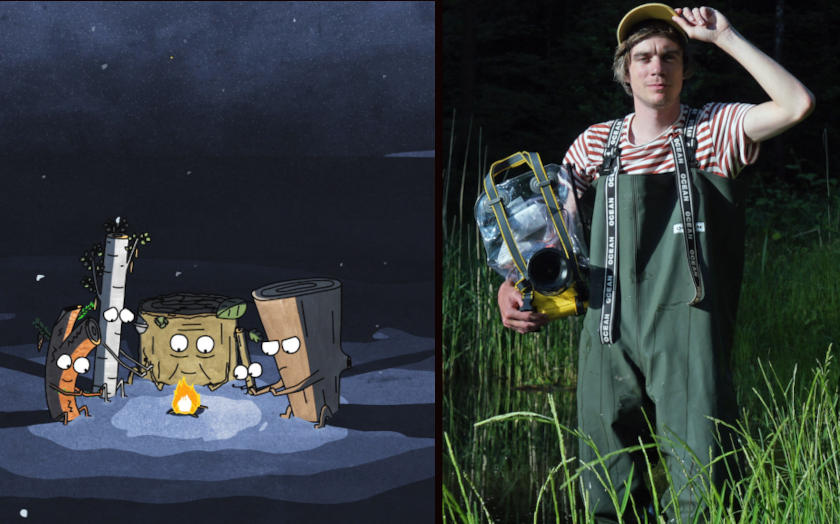
A graduate of HSLU graduates (Lucerne University of Applied Sciences and Arts), Nils Hedinger has established himself as an innovative young animator. His film ‘Timber’, was awarded the Swiss Film Prize in the “Best Animated Film” category in 2015 and was shown at over a hundred international festivals. His playful style focuses on animal and plant characters to tell empathic stories of everyday struggles, and the stories often explore philosophical themes enacted metaphorically. Working in 2d, and with a strong sense of humor underpinning his stories, his animated short films exude a playful wonder at Nature and human-like interaction. Nils Hedinger's films also include 'Kuap', a sweet short film combining live underwater footage in a pond about a late-developing tadpole
JN: How did you become an animator?
NH: I always wanted to make animation. But then I chose to study History at the University in Bern; this only lasted one year and served to let me see what I really should be concentrating on, which was animation. As a kid, I was always making Claymation movies, borrowing my parents’ camera to make 2-3 minute films. I was and still am a huge fan of Wallace and Gromit, and this led to animation becoming my passion which I dreamed of studying. I grew up in Burgdorf, a small city near the capital Bern. Lucerne University is the only place to study animation in Switzerland, and it has a great reputation.
JN: Where in Switzerland are you based?
NH: I am based in Lucerne and Bern. The Swiss animation community is quite small, it is a small enough number of independent animators who are active on the scene so that it is still possible to know most of them. I would say that the Swiss scene is friendly and welcoming; it’s easy to find your place; it’s not too competitive; the industry is quite small, and it’s more of an independent art scene as there is not much money involved. In my experience, it is a friendly and welcoming scene. The scene is not limited to Lucerne though; most people leave Lucerne after their graduation and move to other cities, mostly Zurich, Basel, or Bern.
JN: What are Lucerne and Switzerland like for support and funding opportunities for artists making independent content?
NH: Lucerne does not have the best system in Switzerland to apply for funding for making independent animated short films. You are probably better off going to Zurich or Bern. I have to say that I don’t know that much about commercial funding systems, as I have been focused on making my shorts independently for the last 8-9 years. I think that in comparison with what I have heard about other countries, it is quite a positive situation here. It’s possible to fully fund your short film through public funding. Each Canton (region) has its own funding system, and there is also state TV and private funding to apply for. Once funding has been received, the organization does not interfere with production: you show them the concept and they want to check that the film gets made. Swiss TV oversees the system, and they are involved in support. I have had three films funded through this process; you do not always succeed, but it is a great system. In Switzerland, there are public events to meet other creatives. But in Switzerland, there is not much of an animation industry where you can work your way up to become a director of something bigger (eg. An animated series). I think it’s relatively easy to get your short film financed, but much harder to get funding for a feature. If you want to create your own series, then you would need to find partner funding in at least two other countries, and that complicates the whole production process.

Kuap
JN: What was it like studying animation in Lucerne at Lucerne University of Applied Sciences and Arts?
NH: It’s been 10 years since I left Lucerne University of Applied Sciences and Arts. We had great teachers and some that weren’t so great. I think since I left, a lot has changed mostly for the better. It has grown a lot bigger; when I was studying there were twelve students; now there are thirty. I don’t know much about other international schools in contrast, but I think that at Lucerne they offer quite a broad spectrum, so if you want to go in a more artistic film director route you can; but there is also the option for people who want to work more commercially in the industry – so really a broad spectrum of options.
JN: Have you collaborated with other creatives on different projects?
NH: I work in a studio with 12 other animators, illustrators, and documentary filmmakers. We work and drink coffee together. The collaboration happens quite organically. I never do the sound aspects myself; I have always had sound designers and musicians working on my shorts; most of them are friends with whom I like to collaborate.
JN: What are your key inspirations in developing your ideas?
NH: For the last two films I made, it’s kind of obvious that I am inspired by Nature. And it’s not really that I am actually out in Nature all that much, in the landscape, as much as those films would probably make you believe. But Nature is just such an amazing pool of characters and stuff and stories. And I think that with animals and plants as characters, it’s really funny to see them interact with each other, and also with the tadpole character in ‘Kuap’, their giant single eye is an example of extreme simplicity; you could not have a simpler approach to character design. And so you can empathize with the character immediately, and that is part of the beauty of animation.
And it’s also part of the beauty of Nature, as if the character was a kid instead, you would have a lot of visual aspects which would probably get in the way of identifying with them. Anyone can identify with a simple animal character like a tadpole, but with a child character, there are too many reference points that would get in the way of identifying and empathizing with them. So that’s also a big part of my interest in using Nature and characters from Nature. It’s really the beauty of making any character that is not human. In terms of artists who have influenced me, there are probably too many to mention. The real starting point for me was watching Wallace and Gromit. I read a lot of comics as well; there is a ton of amazing comic book artists out there.
JN: Can you describe your creative and technical workflow?
NH: For the past 10 years, I have been animating digitally. I have a sort of cut-out style, it’s really easy to do by myself. The image side of the work I can do on my own. For ‘Kuap’, I had a large team of 2 other animators, and live-action camera operators for the landscape and underwater scenes. I feel that if I can make them work on my own, I can test it out more experimentally than if I am working with a large team. In terms of software, I animate with Toon Boom Harmony, it suits me perfectly for what I need; I can draw, I can have cut-out elements in it; it has everything that I need. I do some effects using After Effects too and maybe some preparation drawings in Photoshop, but the main workflow is Toon Boom. With ‘Kuap’ it was a very different approach though, due to the live-action backgrounds. So this was composited using After Effects.
JN: There is a strong philosophical element to your work: it is often characterized by animal/plant characters who seem to have been removed from Nature and placed into a more human-like society: animals who experience human-like emotions, such as loneliness (in A Single Rose…) and fear of being left behind (in Kuap). Animal characters act out human scenarios and encounter human problems. Where do your ideas for this start? Do they date back to stories you read as a child?
NH: The inspiration is all of the programs and animations that I watch and things that I see, and the experience of the world that surrounds me…I think that the main thing that I like animation so much is that it is simple to have this metaphorical world and backstory; it’s really easy to develop that sense of backstory because automatically when you draw a character for instance as a piece of wood, a timber character, it operates both as a character. After all, it looks funny, and on the other hand, it is also a placeholder because it is this abstract drawing; even if you drew the character as a human being, it would still be a placeholder because it is a drawing, an abstraction of reality. This allows animators to have easy access to metaphorical storytelling, which does not have to be too much ‘on the nose', or too overt. Whereas, if you use a metaphorical approach in live-action filmmaking, it’s far more difficult because it can come across as either too much or too little…it’s harder to get it right, in my opinion. But in animation, the ability to tell stories so metaphorically is more or less given for free.
JN: What new projects do you have in the pipeline?
NH: It is a short about storytelling, about how society exists because of stories. I mean stories in a wide sense, so fairytales but also state borders, religion, human rights…fictional concepts that only exist because people keep packaging concepts into stories. I hope it will be quite funny, playful, and dynamic. So far I have animated about 5-6 scenes, so about a minute.
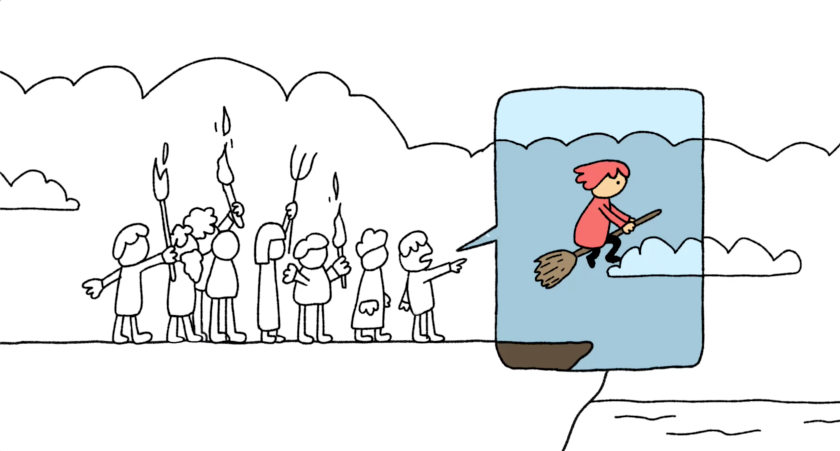
Storytelling
I have previously attended Annecy Festival, I think that it’s a nice mix between more artistic, independent content and more commercially oriented animation. It’s also a good opportunity for my Swiss animation friends to get a showcase for their work too.
contributed by: Joseph Norman
Swiss Animation Portraits 2022 series is conducted in partnership with Swiss Films.





